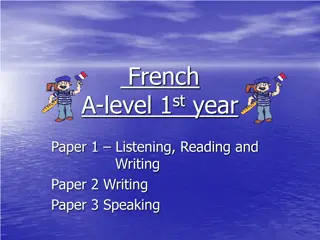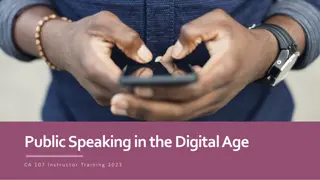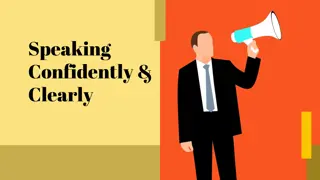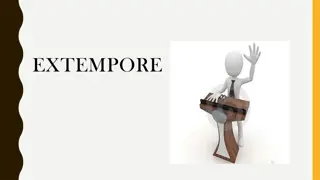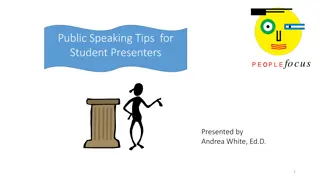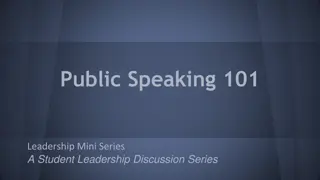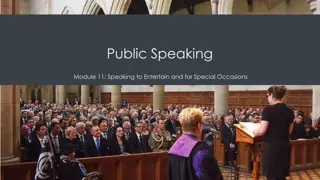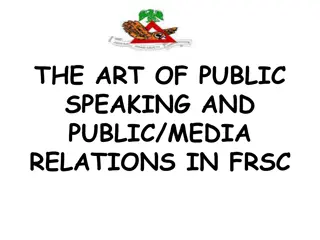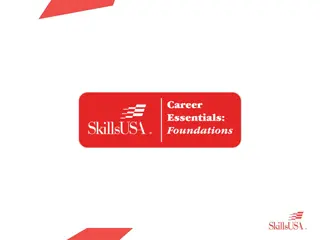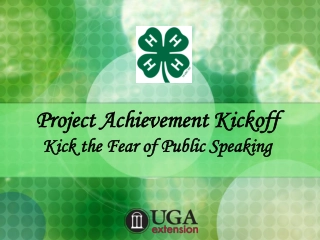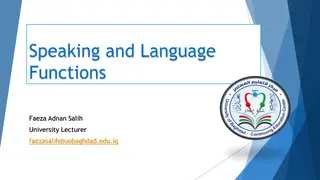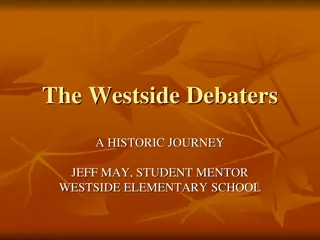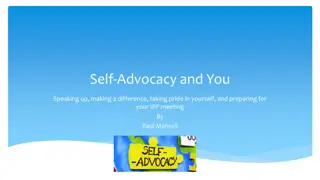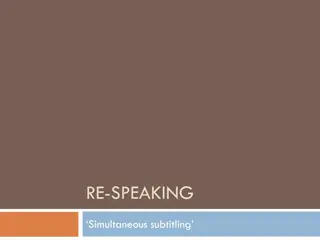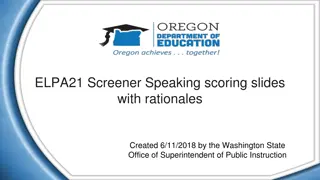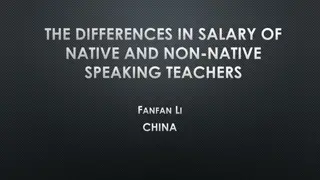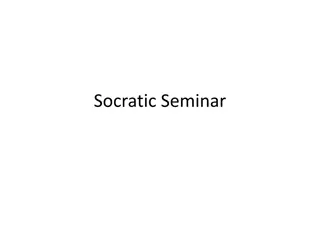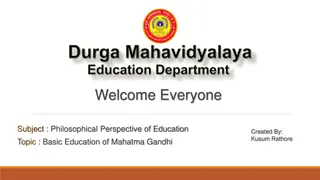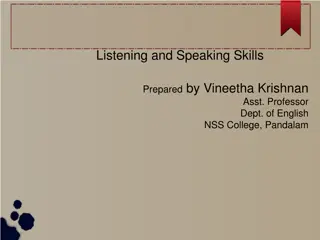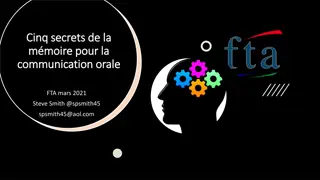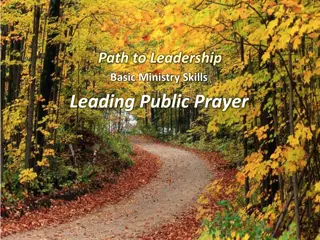Enhancing Monologic Speaking Skills in Education
Explore how to develop students' monologic speaking abilities through structured monologues, utilizing educational examples like the "Picture of the Week" ritual. The content covers competencies in societal and political discourse, strategies for presenting complex topics, and enhancing photographic literacy through reading photos and storytelling activities.
- Monologic Speaking
- Educational Examples
- Speaking Skills
- Photographic Literacy
- Storytelling Activities
Uploaded on Sep 20, 2024 | 0 Views
Download Presentation

Please find below an Image/Link to download the presentation.
The content on the website is provided AS IS for your information and personal use only. It may not be sold, licensed, or shared on other websites without obtaining consent from the author. Download presentation by click this link. If you encounter any issues during the download, it is possible that the publisher has removed the file from their server.
E N D
Presentation Transcript
Modul Gr erer m ndlicher Beitrag im Basisfach : Monolog ZPG Multitagung Birgit Rietgraf www.zsl-bw.de 20.09.2024
Unterrichtsbeispiele Monolog: Picture of the Week Ritualisiert, je ein Sch ler zu Beginn der Stunde Variierbar (News/Cartoon of the Week) Fokus auf vorbereitetem Sprechen Unterrichtliche Einbettung /Hinf hrung www.zsl-bw.de 20.09.2024
Bildungsplan: monologisches Sprechen Kompetenzbeschreibung Die S und S k nnen gesellschaftliche und politische Themen, auch wenn sie abstrakt und teilweise weniger vertraut sind, zusammenh ngend und strukturiert darstellen, in der Regel von Notizen gest tzt. Sie k nnen l nger frei sprechen, ihr Redefluss stockt kaum. Teilkompetenzen 1. Sachverhalte darstellen, Stellung beziehen 2. Text- und Unterrichtsinhalte wiedergeben, zueinander in Beziehung setzen, Stellung beziehen (teilweise) 3. (Gegen-)Argumente darlegen, er rtern, Stellung beziehen 4. Komplexes Thema adressatengerecht pr sentieren Strategien und Methoden Kompensations- und Korrekturstrategien anwenden www.zsl-bw.de 20.09.2024
Reading photos Photographic literacy New York Times Superhero Photo https://www.nytimes.com/2017 /11/06learning/what s-going- on-in-this-picture-nov-6- 2017.html Photo: Black Lives Matter Learning Network Seite der New York Times www.zsl-bw.de 20.09.2024
Reading photos - Steps 1. Spontaneous responses 2. Content What is shown? 3. Form How is it shown? 4. Context 5. Interpretation / Storytelling www.zsl-bw.de 20.09.2024
1 Focus on spontaneous responses https://www.nytimes.co m/2017/11/06learning /what s-going-on-in- this-picture-nov-6- 2017.html Feelings Associations Emotional response www.zsl-bw.de 20.09.2024 20.09.2024
2 Focus on content What is shown? Using cultural codes https://www.nytimes.co m/2017/11/06learning /what s-going-on-in- this-picture-nov-6- 2017.html figures physical features, gender features, ethnic features facial expressions body language, posture, activity social class, dress, objects relation between objects and person(s) setting, location, social situation www.zsl-bw.de 20.09.2024
3 Focus on form - How is it shown? Using aesthetic codes https://www.nytimes.c om/2017/11/06learnin g/what s-going-on-in- this-picture-nov-6- 2017.html foreground, background, centre vantage point/perspective focus frame/margin colour/lighting organisation www.zsl-bw.de 20.09.2024
4 Focus on context 5 Interpretation - storytelling https://www.nytimes.co m/2017/11/06learning /what s-going-on-in- this-picture-nov-6- 2017.html When? Where? Why? By whom? What story/stories does the photo tell? How effective is it? Cultural/historical context For what purpose? www.zsl-bw.de 20.09.2024
Teju Cole TEJU COLE is a novelist, photographer, critic, curator, and the author of five books. He was the photography critic of the New York Times Magazine from 2015 until 2019. He is currently the Gore Vidal Professor of the Practice of Creative Writing at Harvard. Born in the US in 1975 to Nigerian parents, he was raised in Lagos and currently lives in Cambridge, MA. Foto von Teju Cole www.zsl-bw.de 20.09.2024
5 Interpretation storytelling What story/stories does the photo tell? The Superhero Photographs of the Black Lives Matter Movement , Teju Cole, The New York Times Magazine photography critic, explains the significance of the image: As soon as the photograph of Ieshia Evans began to circulate online, people said she looked like a superhero. There she stands, slim and straight, on a street in Baton Rouge. Her dress, abstractly patterned in black and white, swirls around her. She seems almost to be levitating. Opposite her are the cops, clad in black. They are only two, walking ahead of a phalanx of more than a dozen others. But because of the storm-trooper get-up the shoulder pads, helmets and what look like rocket-booster backpacks the two seem like three or four. Their legs advance while their upper bodies lean back, as though recoiling from an unseen force. She is unarmed and unafraid (the open space behind her emphasizes her singularity); they are militarized and unindividuated. The image told such an apparently clear story that when it hit social media, it went viral. The photograph, by the Reuters journalist Jonathan Bachman, was made at an inauspicious time. The rally at which it happened was in response to recent killings of black men by the police, particularly the death of Alton Sterling in Baton Rouge. But just two days earlier, the nation was shocked by the murder of five police officers in Dallas by a lone gunman. Our collective grief, always complicated, took on wicked new fissures. Nevertheless, in spite of, or because of, its simple narrative, Bachman s photograph became an icon. It joined a small group of other images connected to the Black Lives Matter movement. www.zsl-bw.de 20.09.2024
Mgliche Vertiefung 1. Vergleiche mit anderen Superhero Fotos (z.B. tankman , 5.6.1989 Peking, am Tag nach dem Tiananmen Square Massaker) 2. Analyse anderer iconic fotos , wie z.B. Napalm girl (1972). Sensibilisierung f r das ikonische kulturelle Ged chtnis, f r die Wirkm chtigkeit von (gestellten) Fotografien www.zsl-bw.de 20.09.2024 20.09.2024
Tankman Compare this photo with the superhero photo Tankman photo www.zsl-bw.de 20.09.2024
Iconic photos: Napalm girl (1972) Napalm girl (1972) www.zsl-bw.de 20.09.2024
Was mssen S und S knnen? Textsortenkenntnis/ Struktur des Monologs/methodisches Wissen Visual literacy, cultural and photographic codes Soziokulturelles Orientierungswissen Themenabh ngiger Wortschatz Funktionaler Wortschatz www.zsl-bw.de 20.09.2024
Einbettung in den Unterricht Vorbereitung 1 2 3 1 What makes a good speaker? Chris Anderson, head of TED, on speaking The US / Politics / The American Dream / Race Relations / The Butler A first speaking practice: Bring and Tell. Feedback www.zsl-bw.de 20.09.2024
Einbettung in den Unterricht Vorbereitung 1 A first speaking practice: Bring and Tell. 1 What makes a good speaker? Chris Anderson, head of TED, on speaking 2 The US / Politics / The American Dream / Race Relations / The Butler 3 www.zsl-bw.de 20.09.2024
Einbettung in den Unterricht Vorbereitung 2 A second round of speaking with feedback and debriefing 4 Einf hrung in das Format Picture of the Week durch Black Lives Matter Foto 5 A third round of speaking practice: Jeder Sch ler pr sentiert ein selbstgew hltes Bild in gesch tztem Rahmen (teams of three); einzelne Sch ler vor der Klasse 6 www.zsl-bw.de 20.09.2024
Chris Anderson on speaking There is no one way to give a great talk. Any attempt to apply a single set of formula is likely to backfire . The only real job in giving a talk is to have something valuable to say and to say it authentically in your own unique way . In every culture on earth, as language developed, people learned to share their stories, hopes and dreams Our campfire is now the whole world. Thanks to the Internet, suddenly an ancient art has global reach. Chris Anderson, TED Talks. The official TED guide to public speaking. Prologue: The New Age of Fire Foto von Chris Anderson www.zsl-bw.de 20.09.2024


